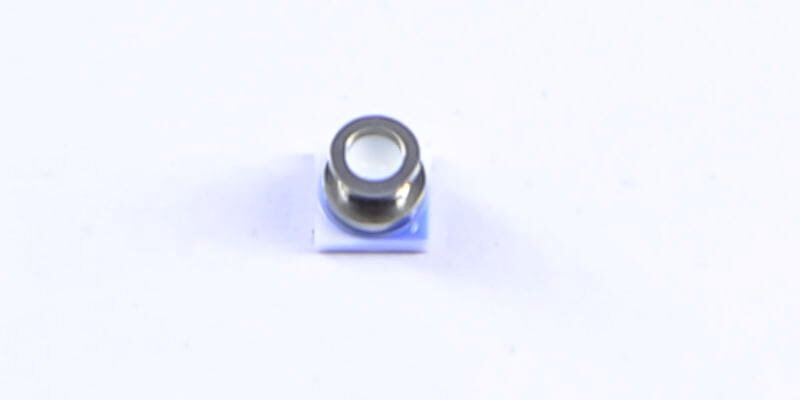Каталог
High-precision laser measurement sensors rely on laser diodes, high-speed CMOS devices, and fast signal processing to achieve μm-level accuracy and millisecond-level response in non-contact measurements. Combined with pressure/pressure-transducer design, they provide highly reliable measurement capabilities in industrial, manufacturing, аерокосмічний, automotive, and medical fields. From an engineering perspective, this article explains key components, how target metrics are achieved, system integration, and practical application points to help technical decision-makers quickly grasp design and deployment essentials.
1. Core Components and Working Principles
Optical chain and receiver mechanism of laser measurement sensors
A laser emission diode sends pulsed light toward the target; the target reflects and scatters light, and the optical system collects part of that scattered light and images it onto an avalanche photodiode (APD) or a high-speed photodetector. The detector amplifies the extremely weak optical signal into an electrical signal, which is then processed by high-speed CMOS / ADC and digital signal processing units to perform time-of-flight or phase-based ranging, yielding μm-level distance or thickness data. The entire process requires optical stability, low-noise amplification, and high-bandwidth sampling to maintain accuracy and response speed.

2. Key Technical Specifications and Implementation Methods
Quantified goals for accuracy, response, and linearity
Achieving μm-level accuracy requires breakthroughs across optical design, detector noise, and algorithms: improve beam quality and depth of focus, use high-gain low-noise APDs or low-noise front-ends, and apply differential measurement or phase-recovery algorithms to suppress environmental vibration. Millisecond-level response depends on high-speed CMOS readout, FPGA/ASIC-level signal processing, and appropriate filtering and de-jittering. Linearity and sensitivity are ensured within the measurement range by calibration coefficients and temperature-compensation circuits, maintaining about ±0.1% performance.
3. Cooperative Design of Laser Measurement and Pressure Sensors
System considerations when combining laser displacement and pressure measurements
When a measurement system includes both laser displacement and pressure conversion (pressure-transducer electrical outputs), different signal domains’ coupling and interference must be addressed. Electromagnetic compatibility (EMC), suppression of shared power-supply noise, analog front-end isolation, and digital filter design are critical. Linearization and sensitivity calibration of the pressure transducer, together with timing coordination with laser measurements, enable synchronized capture of dynamic conditions—suitable for thickness/inner-diameter inspection on production lines or device-end position control.
4. Engineering Application Scenarios and Implementation Considerations
Practical deployment points in industrial manufacturing and medical fields
In automated production and inspection, point measurement (displacement sensors), line measurement (light curtain / alignment), and area measurement (3D laser line scanning) satisfy different needs. Engineering implementation points include protecting and cleaning optical paths, mechanical referencing and motion compensation, interface protocols (SPI/I²C/digital outputs), and real-time data-stream management. For high-reliability scenarios such as medical or aerospace, strengthen temperature-drift compensation and multi-point redundant detection to ensure safety.
5. Надійність, Calibration, and Production Testing
Calibration and testing processes to ensure long-term stability
Stability is achieved by multi-layer measures: device-level (detector and laser selection), module-level (temperature compensation and protective design), and system-level (automated calibration routines and online self-check). Production testing includes static reference-point calibration, dynamic response testing, and environmental temperature/humidity cycling to verify linearity, repeatability, and response-time metrics. Keep calibration curves on record and provide certificates at shipment to help field engineers quickly reproduce measurement baselines.
Висновок
High-precision laser measurement sensors center on laser diodes, high-speed detectors, and fast signal processing. Through coordinated optimization of optics, electronics, and software, they deliver μm-level accuracy and millisecond response in non-contact measurement. Integrating laser measurement with pressure sensing requires handling cross-domain signal coupling, EMC, and calibration strategies. Engineering deployment should focus on interfaces, environmental protection, and production-line verification to meet industrial and high-reliability application demands. The WF5803F-type pressure sensor shown in the image can serve as a reference integration module—its package and pin layout facilitate pairing with laser measurement modules in enclosure designs.
Наведене вище вступ лише дряпає поверхню застосування технології датчика тиску. Ми продовжуватимемо вивчати різні типи сенсорних елементів, що використовуються в різних продуктах, Як вони працюють, та їх переваги та недоліки. Якщо ви хочете більше детально про те, що тут обговорюється, Ви можете перевірити відповідний вміст пізніше в цьому посібнику. Якщо вас натискають на час, Ви також можете натиснути тут, щоб завантажити деталі цих посібників Дані датчика тиску повітря PDF.
Для отримання додаткової інформації про інші технології датчиків, будь ласка Відвідайте нашу сторінку датчиків.


